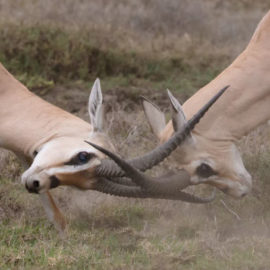
Are you looking for ways to make your data more engaging and impactful? Have you wondered which visualization techniques work best for communicating your insights effectively?
In her book Storytelling With Data, Cole Nussbaumer Knaflic emphasizes the importance of mastering data storytelling basics before attempting advanced techniques. She recommends starting with fundamental visualizations while focusing on creating a shared understanding with your audience.
Read on to discover how you can develop these essential skills and help your entire team become more proficient in communicating with data.
Data Storytelling Basics
Knaflic explains that, before you dive into advanced or novel visualization techniques, it’s crucial to master data storytelling basics. Understanding what data storytelling is and building a solid foundation in core visualization methods helps you to focus on establishing a shared understanding with your audience.
What Does It Mean to Tell a Story With Data?
We’ve all sat through presentations where someone throws an inscrutable graph onto the screen and expects the audience to immediately grasp its significance. Maybe you’ve even been that presenter, wondering why your carefully collected data isn’t having the impact you’d hoped for. As Knaflic explains, the problem isn’t the data itself; it’s how we’re presenting it. Effective storytelling with data goes beyond simply plugging numbers into a chart. You need to transform your data into a compelling story: one that helps people understand what the numbers mean and enables them to take meaningful action based on those insights.
Think of it like being a tour guide at a museum. You wouldn’t just point to artifacts and recite facts; instead, you’d weave those objects into a narrative that helps visitors understand their significance. Similarly, when presenting data, your job is to guide your audience through the information in a way that makes its meaning clear and memorable. Knaflic explains that, to accomplish this, you need to master three essential skills: interpreting the data (understanding what’s significant), turning the numbers into a story (creating a meaningful narrative), and using design to tell that story (presenting the information visually).
| What’s the Difference Between Raw Data and Processed Information? Some experts say that the first step to telling a story with data is to transform raw data into processed information—and that there’s a crucial distinction between the two. Raw data are observations about the world, usually in the form of numbers and measurements, while processed information refers to the conclusions we draw by analyzing and interpreting raw data. Although we often treat data like information, data scientists emphasize that data is meaningless on its own. To turn data into useful information, we must consider them in the proper context, try to find the objective truths they represent, and exercise humility about the limits of our knowledge about the world. In both datasets and museums, storytelling can bring out connections that would otherwise go unnoticed. For an exhibition at Vienna’s Kunsthistorisches Museum, filmmaker Wes Anderson and novelist Juman Malouf selected hundreds of seemingly unrelated pieces from the museum’s collection, many of them often overlooked, like a tiny mummified shrew in a coffin. They grouped objects based on color, material, size, and subject matter, making intuitive connections between artifacts that wouldn’t otherwise appear together. Similarly, people skilled at presenting data are intentional about how they interpret the numbers, enabling their audience to grasp connections that might have been obscured if they only looked at the raw data. |
Learn to Create Basic Data Visuals
Knaflic recommends starting by learning to create tried-and-true visualization types such as bar charts, line graphs, scatterplots, and tables. Master best practices for creating these visuals, such as choosing the right chart type, removing non-essential and potentially distracting details, and using preattentive attributes strategically. Once you’ve built proficiency with the basics, you can explore more advanced techniques if needed.
For example, let’s say you want to visualize product pricing data over time for your company and its closest competitors. A simple line graph allows you to clearly show pricing trends without overwhelming your audience. You can use line thickness, color, and direct labeling to highlight key insights. Only after mastering this fundamental visualization should you consider more novel approaches such as a slopegraph or animated transitions between time periods.
Knaflic stresses that the basics of data storytelling are tool-agnostic: The practice relies on the same best practices, whatever software or platform you use to process your data and create your visualizations. While proficiency in tools such as Microsoft Office is now a basic expectation across many roles and industries, what can really set your work apart is the capacity to transform data into compelling narratives that resonate with your audience and help them to take action.
(Shortform note: When you’re just starting out, it can seem like there’s an endless array of charts to learn to build. Experts say the most essential are bar charts, line charts, scatter plots, and box plots, which encode values through position, length, and area. As you progress, you’ll notice common variations on these basics, such as stacked or grouped bar charts, area charts, dual-axis charts, and density curves, which incorporate additional variables or smoothing techniques. When you’ve mastered these, you can move on to specialist charts tailored for specific use cases, such as funnel charts for conversion tracking, bullet charts for performance benchmarking, and map-based visualizations for geospatial data.)
Keep Learning—and Get Others on Board
Knaflic believes that data visualization and data storytelling are skills that can be taught and learned, just like any other skill that you might use in your career. She thinks it’s important to invest in training experts in your organization so you can improve your team’s skill in storytelling. You can invest in a formal training program such as a workshop, a course, or a guided practice session. Or, you can provide learning resources and opportunities for members of your team who are interested in specializing in this area.
Whatever route you choose, Knaflic says you should aim to create an environment where your team actively develops, practices, and shares data storytelling skills. That might involve establishing a process for getting feedback on presentations, having coaches mentor other members of the team, discussing best practices, or running challenges to get your team to learn and apply new techniques. Developing these skills takes commitment and investment. But the payoff is immense and will enable your organization to extract maximum insight from data and communicate findings with clarity and impact.
(Shortform note: Data storytelling and visualization are valuable skills to develop, but some experts argue that cultivating a truly data-driven culture requires more than just technical training. It also involves embracing data literacy so you can use data for decision-making across all roles and levels. Data literacy doesn’t require everyone to have advanced technical skills, but rather to be comfortable using data to make informed decisions and improve their processes. Insufficient data literacy poses risks such as misinterpretation of data, poor decision-making, and missed opportunities for innovation and growth, while investing in data literacy for everyone can yield benefits such as more innovative thinking.)






